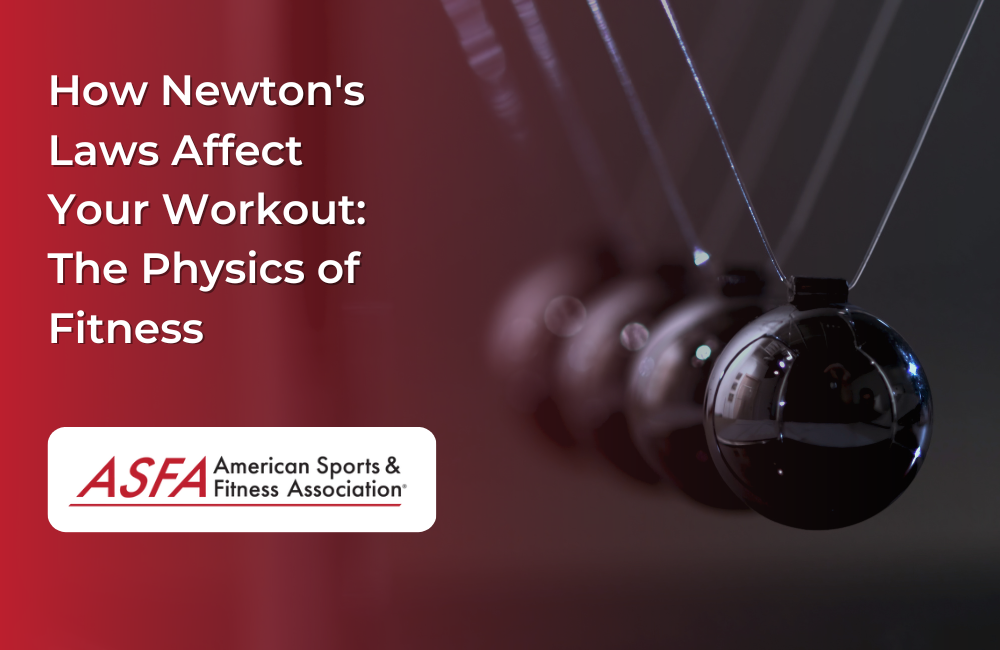When you step into the gym or embark on a workout routine, you're not just challenging your muscles and cardiovascular system; you're also engaging with the fundamental principles of physics. Sir Isaac Newton's laws of motion, which describe the relationship between a body and the forces acting upon it, play a significant role in shaping your exercise experience. In this blog, we'll explore how Newton's laws affect your workout and provide insights into optimizing your fitness regimen.
Newton's First Law of Motion: The Law of Inertia
"An object at rest stays at rest, and an object in motion stays in motion with the same speed and in the same direction unless acted upon by an unbalanced external force."
Application to Your Workout: Newton's first law, the law of inertia, reminds us that it takes effort to initiate movement and change the state of motion. When you're starting a workout, overcoming the inertia of rest requires a burst of energy. Conversely, maintaining momentum during exercises like running or cycling requires minimal effort once you're in motion.
Fitness Tip: Warm-up routines are essential to prepare your muscles and cardiovascular system, reducing the resistance of inertia when you begin your workout. Gradually increasing your intensity during warm-ups can help minimize the initial effort needed.
Newton's Second Law of Motion: The Law of Acceleration
"The acceleration of an object is directly proportional to the net force acting upon the object and inversely proportional to the object's mass."
Application to Your Workout: Newton's second law emphasizes that the force applied to an object determines its acceleration. In the context of fitness, it means that the force you exert during exercises directly impacts your ability to accelerate or decelerate your movements.
Fitness Tip: To increase acceleration and enhance the effectiveness of your workout, focus on increasing the force applied during resistance training or exercises like sprinting. Adjusting weights, resistance levels, or exercise intensity can help you optimize acceleration.
Newton's Third Law of Motion: The Law of Action-Reaction
"For every action, there is an equal and opposite reaction."
Application to Your Workout: Newton's third law highlights the concept that every action you take during a workout produces a corresponding reaction. In practical terms, this means that when you push or pull, your body experiences an equal and opposite force.
Fitness Tip: To maximize the benefits of this law, incorporate exercises that utilize the principle of action-reaction. For instance, in strength training, when you push a weight away from your body (action), your muscles contract, and you experience the resistance (reaction). This principle underscores the importance of controlled movements and proper form in your exercises.
Balancing the Forces in Your Workout
In your workout, the key is to find a balance between the forces you apply and the forces your body experiences. This equilibrium allows you to perform exercises safely and effectively while optimizing the physiological benefits of your fitness routine.
Here are some additional tips to consider:
- Form and Technique: Maintaining proper form and technique in your exercises is crucial to ensure that the forces are applied optimally. Poor form can lead to injury and reduce the effectiveness of your workout.
- Progressive Overload: As your body adapts to your workout routine, progressively increase the resistance, intensity, or duration to continue challenging your muscles and making progress.
- Rest and Recovery: Newton's laws also apply to recovery. Giving your body adequate time to rest and recover is essential to prevent overuse injuries and allow your muscles to repair and grow.
- Nutrition and Hydration: Proper nutrition and hydration provide the energy and nutrients your body needs to generate force and sustain your workout.
- Individual Variation: Remember that everyone's body responds differently to exercise. Tailor your workout plan to your goals, fitness level, and any specific needs or limitations you may have.
In conclusion, Newton's laws of motion provide valuable insights into the physics of fitness. Understanding and applying these principles can help you optimize your workouts, reduce the risk of injury, and achieve your fitness goals effectively. By striking the right balance between forces and actions, you can harness the power of physics to enhance your fitness journey.





